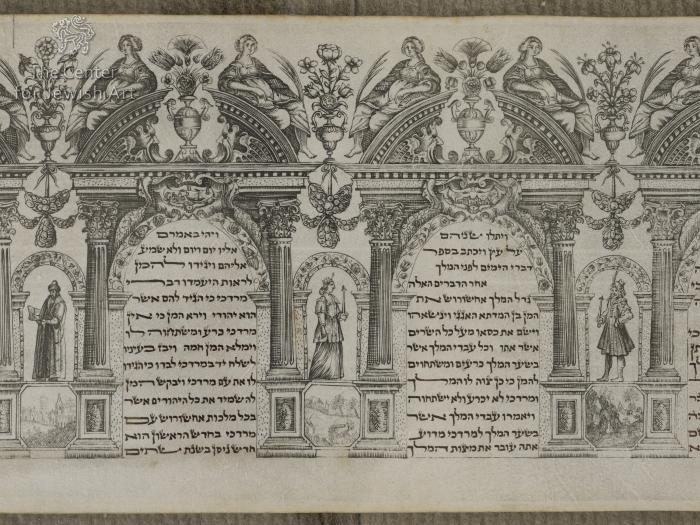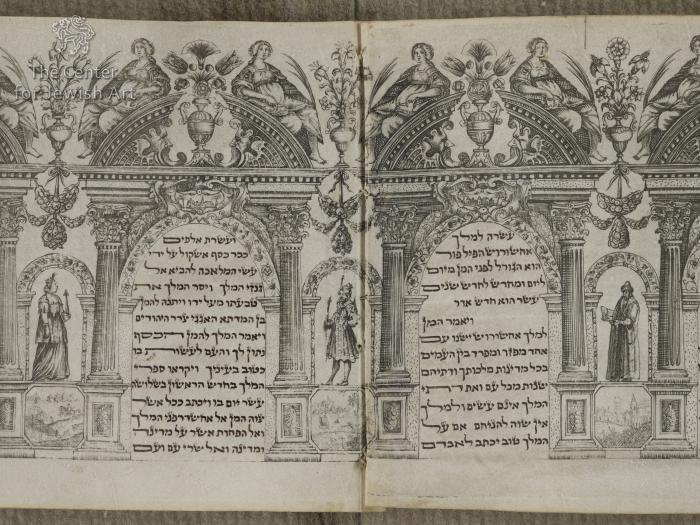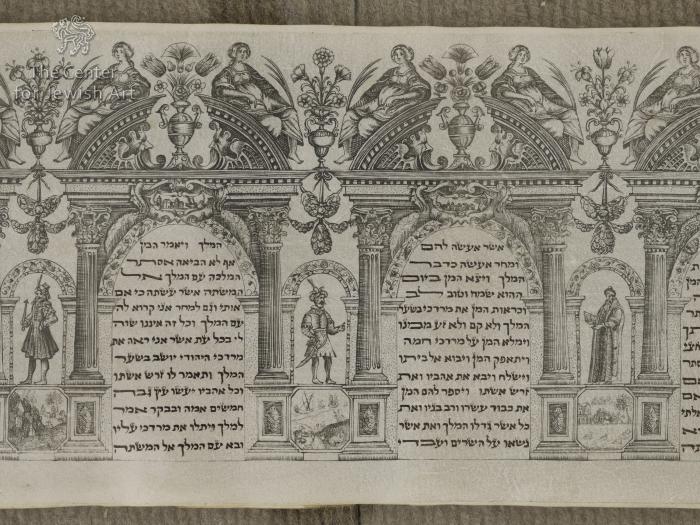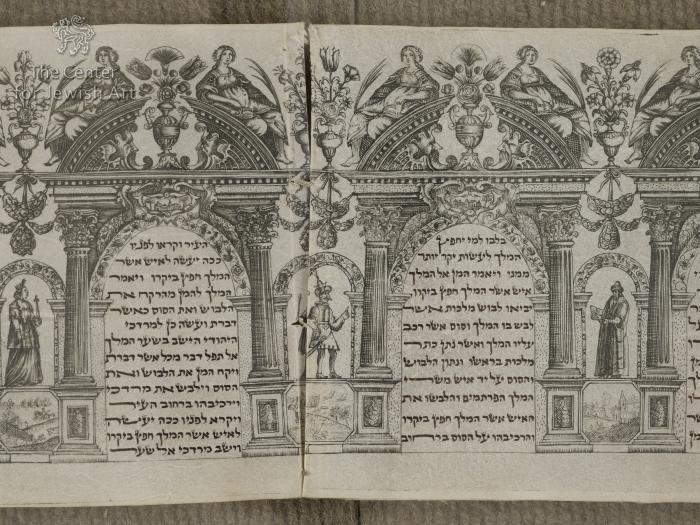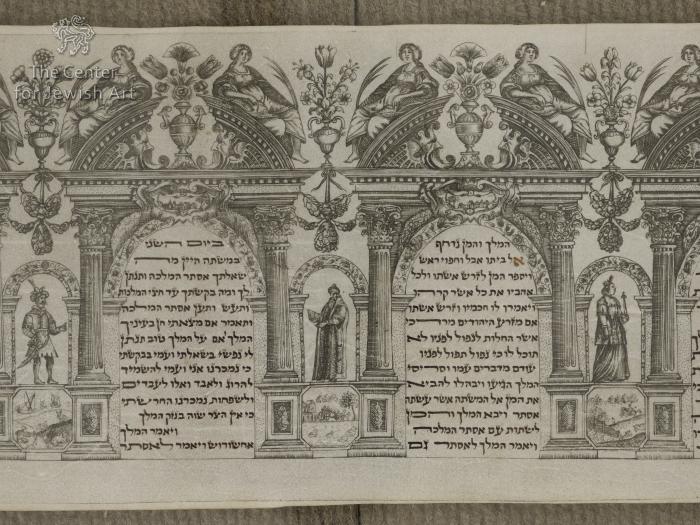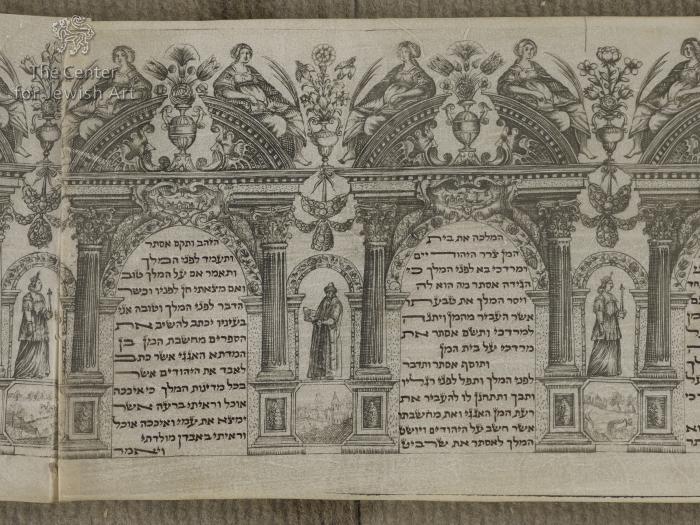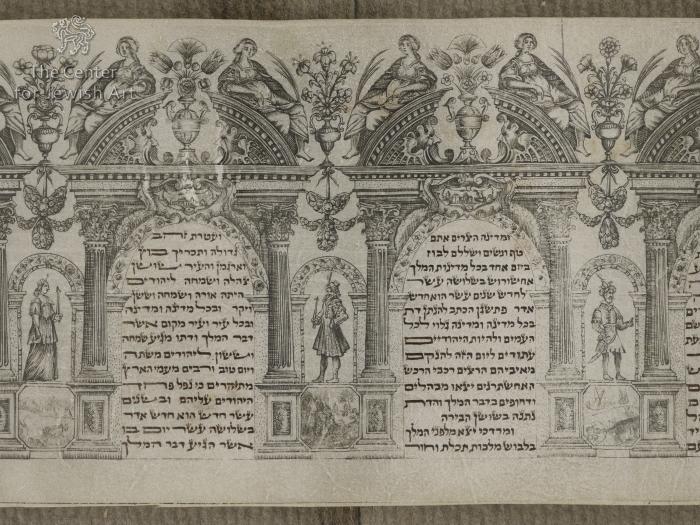Obj. ID: 39593 Bibliotheque Municipale de Nantes Shalom Italia Engraved Esther Scroll with Ladies, Amsterdam, 1640s
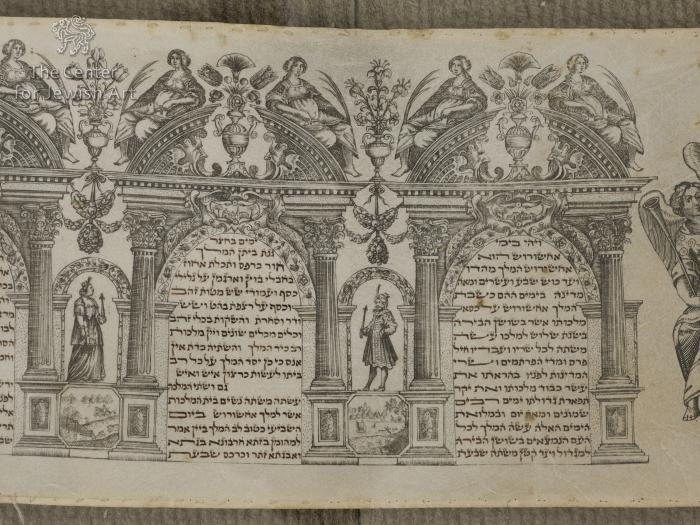
The manuscript (the text, decorations, and membranes) is very well preserved.
Lavishly decorated Esther scroll adorned with an engraved border designed by Shalom ben Mordecai Italia (also known as Shalom D'Italia).
The scroll opens with a symmetrical decoration based on a semicircle that is composed of six birds (a pair of owls (?) - not visible in this copy, quails or partridges, and parrots) with a flower in a central place of it. Next to it, two angels with trumpets support a decorative cartouche topped with a heraldic helmet. Below it, there is another cartouche, and below the name of the artist appears on the ribbon. In this scroll, both cartouches are empty.
The Hebrew text of the Book of Esther is inscribed within elaborately decorated arcades on which ornamentation of the upper margins is placed. They are filled with repetitive elements: two women with their heads turned away from one another, holding palm branches and leaning on broken pediments (possibly an allegory of Peace) and flower-filled vases placed inside the pediments (they are flanked by decorative masks) and separating the pairs of women. In the elongated cartouches placed at the top of the arches, various land- and cityscapes are included. Full figures of four Esther story protagonists are placed in the niches between the text panels; every figure of Ahasuerus, Esther, Mordecai, and Haman appears twice on each sheet. They stand on small octagonal pedestals on which land- and seascapes are depicted; they show four different rural landscapes, two landscapes with a river and a boat on it, a river and a carriage, and a sea with boats on it. The same engraved metal plate was used for all membranes; therefore, the decorative scheme repeats along with the entire length of the scroll, except for the illustrations.
The Book of Esther in Hebrew
None
There are several scrolls sharing the same pattern and others adorned with different borders designed by the same artist (see "Related objects").
The last panel in the scroll is blank.
Bibliography concerning the scrolls designed by Shalom Italia or attributed to him:
Sharon Assaf, Emily D. Bilski, Salom Italia's Esther Scrolls and the Dutch Golden Age, Amsterdam 2011.
A Journey through Jewish Worlds: Highlights from the Braginsky Collection of Hebrew Manuscripts and Printed Books, eds. E.M. Cohen, E. Schrijver, S. Liberman Mintz, Amsterdam 2009, 228-231 (describes another scroll designed by Shalom Italia).
Michael Garel, An Esther Scroll by Shalom Italia, "The Israel Museum Journal" 5 (Spring 1986), 107–108.
Mordecai Narkiss, Yeẓurato shel Shalom ben rabbi Mordechai Italia (1619–1655?) [The Oeuvre of the Jewish Engraver Salom Italia (1619–1655?)], "Tarbiz" 25(4), 1956, 441–451, and: ibidem no. 26(1), 1957, 87–101.
Shalom Sabar, A New Discovery: The Earliest Illustrated Esther Scroll by Shalom Italia, „Ars Judaica” 2012, no. 8, 119–136.
Schöne Seiten. Jüdische Schriftkultur aus der Braginsky Collection, eds. Emile Schrijver, Falk Wiesemann, Evelyn M. Cohen, Sharon Liberman Mintz, Menahem Schmeltzer, Zurich 2011, 274‒279.








